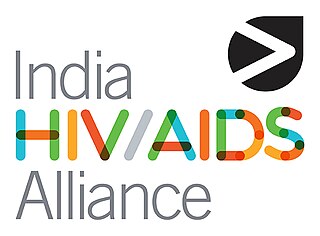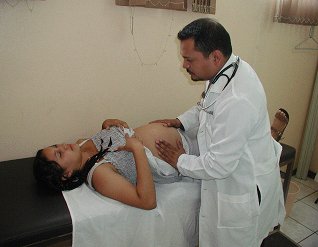Since the first HIV/AIDS case in the Lao People’s Democratic Republic (PDR) was identified in 1990, the number of infections has continued to grow. In 2005, UNAIDS estimated that 3,700 people in Lao PDR were living with HIV.
Angola has a large HIV/AIDS infected population, however, it has one of the lowest prevalence rates in the Southern Africa zone. The status of the HIV/AIDS epidemic in Angola is expected to change within the near future due to several forms of behavioral, cultural, and economic characteristics within the country such as lack of knowledge and education, low levels of condom use, the frequency of sex and number of sex partners, economic disparities and migration. There is a significant amount of work being done in Angola to combat the epidemic, but most aid is coming from outside of the country.

HIV/AIDS in Lesotho constitutes a very serious threat to the Basotho people and Lesotho's economic development. Since its initial detection in 1986, HIV/AIDS has spread at alarming rates in Lesotho. In 2000, King Letsie III declared HIV/AIDS a natural disaster. According to the Joint United Nations Programme on HIV/AIDS (UNAIDS) in 2016, Lesotho's adult prevalence rate of 25% is the second highest in the world, following Swaziland.
Although Senegal is a relatively underdeveloped country, HIV prevalence in the general population is low at around 0.08 per 1000 people, under 1% of the population. This relatively low prevalence rate is aided by the fact that few people are infected every year– in 2016, 1100 new cases were reported vs 48,000 new cases in Brazil. Senegal's death due to HIV rate, particularly when compared it to its HIV prevalence rate, is relatively high with 1600 deaths in 2016. Almost two times as many women were infected with HIV as men in 2016, and while almost three times as many women were receiving antiretroviral therapy (ARV) as men, only 52% of HIV positive people in Senegal received ARV treatment in 2016.
With less than 0.1 percent of the population estimated to be HIV-positive, Bangladesh is a low HIV-prevalence country.

Nepal's first cases of HIV/AIDS were reported in 1988 and the disease has primarily been transmitted by intravenous drug use and unprotected sex. Among the two, HIV epidemic is largely attributed to sexual transmissions which account for more than 85% of the total new HIV infections.Available data indicate that there was a sharp increase in the number of new infections starting in 1996, coinciding with the outbreak of civil unrest. The infection rate of HIV/AIDS in Nepal among the adult population is estimated to be below the 1 percent threshold which is considered "generalized and severe". However, the prevalence rate masks a concentrated epidemic among at-risk populations such as female sex workers (FSWs), male sex workers (MSWs), injecting drug users (IDUs), men who have sex with men (MSM), Transgender Groups (TG), migrants and Male Labor Migrants(MLMs) as well as their spouses. Cultural factors have also been shown to play a significant role in the spread of HIV and AIDS in Nepal. Some of these cultural factors are related with social taboos which creates challenges for open discussions regarding sex and sexual habits, as do denial, stigma, and discrimination that surround HIV and AIDS. Other factors such as poverty, low levels of education and literacy, political instability combined with gender inequality make the tasks challenging.
Since HIV/AIDS was first reported in Thailand in 1984, 1,115,415 adults had been infected as of 2008, with 585,830 having died since 1984. 532,522 Thais were living with HIV/AIDS in 2008. In 2009 the adult prevalence of HIV was 1.3%. As of 2016, Thailand had the highest prevalence of HIV in Southeast Asia at 1.1 percent, the 40th highest prevalence of 109 nations.
HIV/AIDS in Bolivia has a less than 1 percent prevalence of Bolivia's adult population estimated to be HIV-positive and therefore the country has one of the lowest HIV prevalence rates in the Latin America and Caribbean region.
Cases of HIV/AIDS in Peru are considered to have reached the level of a concentrated epidemic. According to a population-based survey conducted in Peru’s 24 largest cities in 2002, adult HIV prevalence was estimated to be less than 1 percent. The survey demonstrated that cases are unevenly distributed in the country, affecting mostly young people between the ages of 25 and 34. As of July 2010, the cumulative reported number of persons infected with HIV was 41,638, and there were 26,566 cases of AIDS, according to the Ministry of Health (MOH), and the male/female ratio for AIDS diagnoses in 2009 was 3.02 to 1. The Joint United Nations Program on HIV/AIDS (UNAIDS) estimates 76,000 Peruvians are HIV-positive, meaning that many people at risk do not know their status. There were 3,300 deaths due to AIDS in Peru in 2007, down from 5,600 deaths in 2005.
The Dominican Republic has a 0.7 percent prevalence rate of HIV/AIDS, among the lowest percentage-wise in the Caribbean region. However, it has the second most cases in the Caribbean region in total, with an estimated 46,000 HIV/AIDS-positive Dominicans as of 2013.
According to the Global Fund, Honduras is the Central American country most adversely affected by the HIV/AIDS epidemic. As of 1998, Honduras had the highest prevalence of HIV out of all seven Central American countries according to a study published by the office of the Honduran Secretary of Public Health. As of that same year, Hondurans made up only 17% of the Central American population, yet Honduras contained 50% of the initial AIDS cases in Central America and 60% of all Central American cases in 2001. In more recent years, new HIV infections have decreased by 29% since 2010 while AIDS-related deaths have increased by 11% since then. HIV/AIDS heavily affects the young, active, working population in Honduras, and HIV/AIDS deaths account for 10% of the overall national mortality rate. As of 2008, AIDS was the leading cause of death among Honduran women of childbearing age and the second-leading cause of hospitalization among both men and women. Sexually transmitted infections are common, and condom use in risky sexual encounters is sporadic and variable. HIV remains a mainly heterosexual epidemic in Honduras, as 90% of emerging infections are attributed to heterosexual transmission. It is estimated that the prevalence of HIV among Honduran adults is 1.5%.
HIV/AIDS in Jamaica has a 1.5 percent prevalence of the adult population estimated to be HIV-positive and no significant change over the last five years and therefore Jamaica appears to have stabilized its HIV/AIDS epidemic.
With less than 1 percent of the population estimated to be HIV-positive, Egypt is a low-HIV-prevalence country. However, between the years 2006 and 2011, HIV prevalence rates in Egypt increased tenfold. Until 2011, the average number of new cases of HIV in Egypt was 400 per year. But, in 2012 and 2013 it increased to about 600 new cases and in 2014 it reached 880 new cases per year. According to UNAIDS 2016 statistics, there are about 11,000 people currently living with HIV in Egypt. However, unsafe behaviors among most-at-risk populations and limited condom usage among the general population place Egypt at risk of a broader epidemic.
Prostitution in Eswatini is illegal, the anti-prostitution laws dating back to 1889, when the country Eswatini was a protectorate of South Africa. Law enforcement is inconsistent, particularly near industrial sites and military bases. Police tend to turn a blind eye to prostitution in clubs. There are periodic clamp-downs by the police.

Founded in 1999, Alliance India is a non-governmental organisation operating in partnership with civil society, government and communities to support sustained responses to HIV in India that protect rights and improve health. Complementing the Indian national programme, we build capacity, provide technical support and advocate to strengthen the delivery of effective, innovative, community-based HIV programmes to vulnerable populations: sex workers, men who have sex with men (MSM), transgender people, hijras, people who inject drugs (PWID), and people living with HIV.
With an estimated 120,000 people living with HIV/AIDS, the HIV/AIDS epidemic in Colombia is consistent with the epidemic in much of Latin America as a whole, both in terms of prevalence of infection and characteristics of transmission and affected populations. Colombia has a relatively low rate of HIV infection at 0.4%, though certain groups, particularly men who have sex with men, bear the burden of significantly higher rates of infection than the general population. Colombia's health care system and conception of a "right to health," created by the T-760 decision of 2008, have revolutionized access to HIV treatment. Despite this, the quality of health insurance and treatment for HIV has often been disputed.









